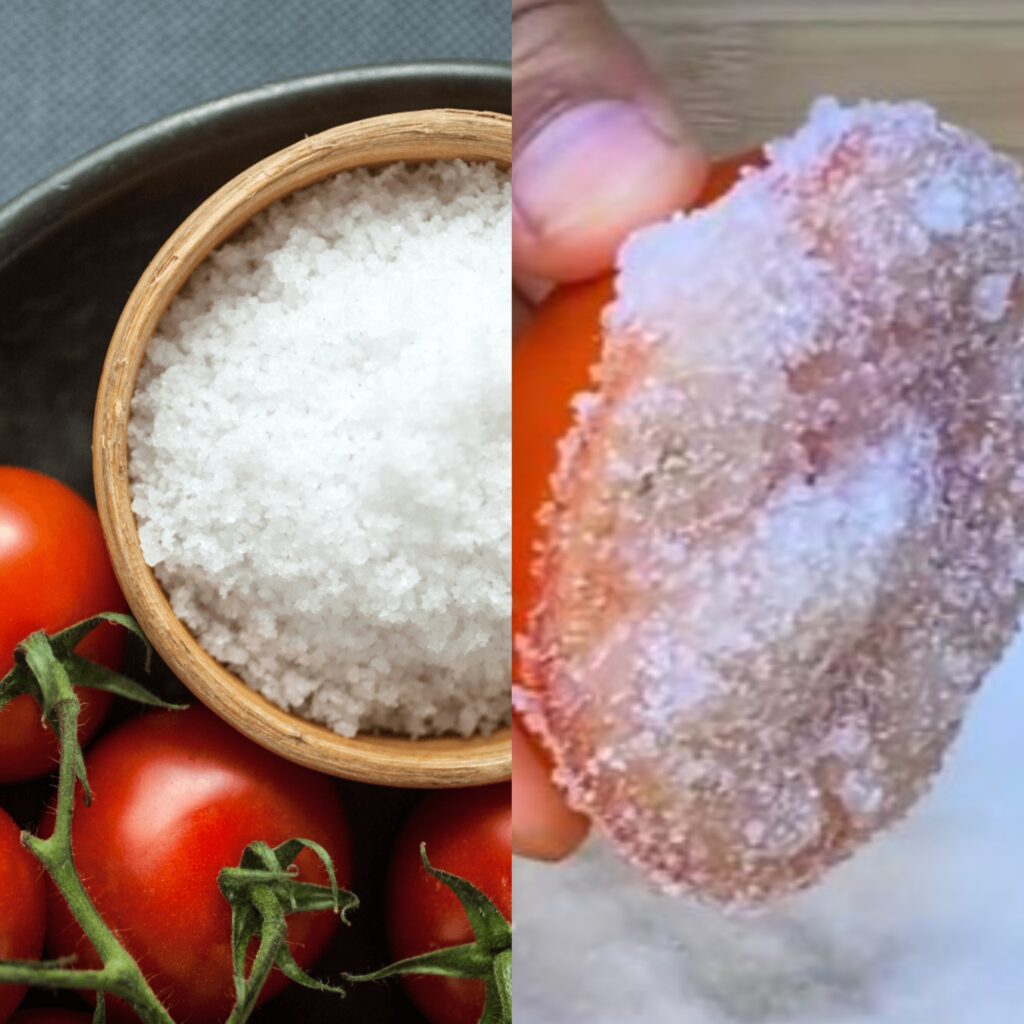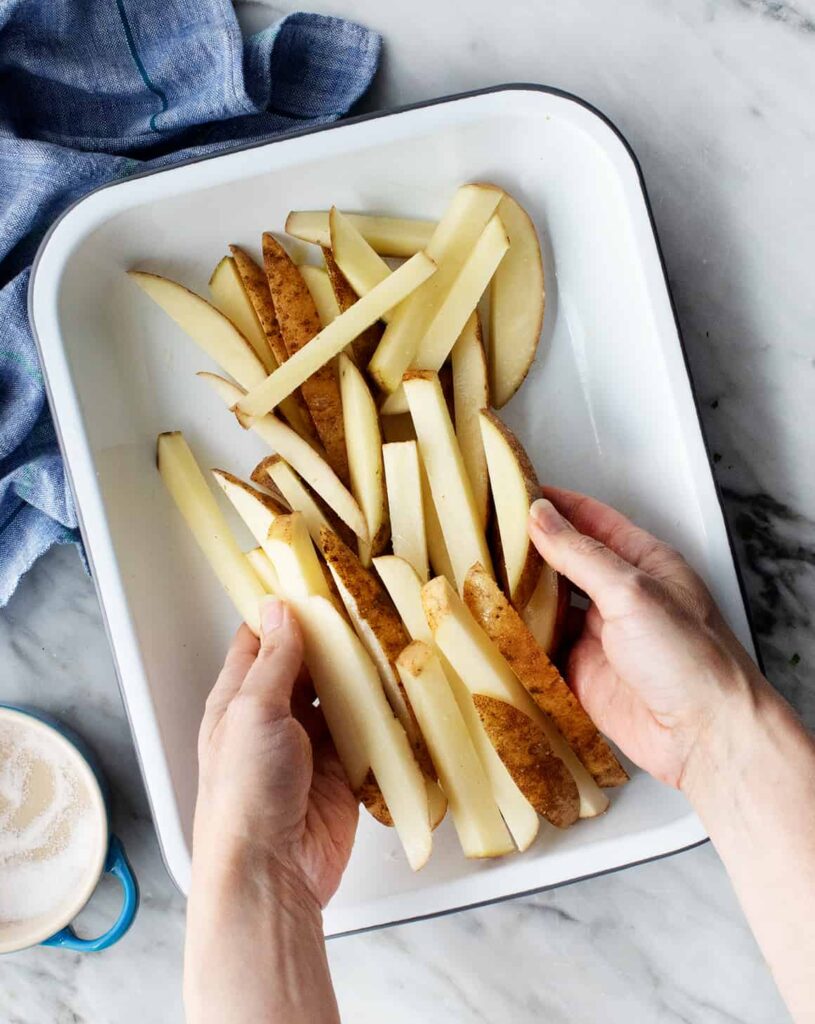Introduction: The Fascinating Science of Salt and Tomatoes
If you’re curious about how everyday household items interact, here’s a simple and fun experiment you can try with just a tomato and some salt. This experiment not only demonstrates a basic scientific principle but also makes for an interesting observation on how salt affects the moisture in vegetables.
What You Need:
- A ripe tomato
- Salt (any kind will do, but table salt is fine)
- A plate or a small bowl
Step-by-Step Guide:
- Prepare the Tomato:
- Start by selecting a ripe tomato that is firm and free of blemishes. Wash it thoroughly under running water to ensure it’s clean.
- Cut the tomato in half horizontally.
- Apply the Salt:
- Take one half of the tomato and place it on the plate or in a small bowl with the cut side up.
- Generously sprinkle salt over the cut surface of the tomato half. Make sure it’s well-covered.
- Observation Time:
- Leave the salted tomato half at room temperature on the kitchen counter. Place the unsalted half next to it for comparison.
- Observe the changes over the next 30 minutes to an hour.
What Happens:
- Moisture Release:
- Salt is hygroscopic, meaning it attracts and holds water molecules from its environment. When applied to the tomato, the salt draws out the water from the cells of the tomato through a process known as osmosis.
- You’ll notice that the salted half of the tomato begins to sweat or release water, leaving a pool of liquid around it. The unsalted half remains relatively unchanged.
Texture Changes:
-
- The salted tomato half will likely become softer and somewhat shriveled as it loses moisture. This can make the tomato taste more concentrated and slightly saltier.
Conclusion: More Than Just a Tasty Ingredient
This simple experiment not only provides a visual understanding of how salt affects moisture in food but also demonstrates the osmotic process right before your eyes. It’s a great example of how kitchen ingredients can be used to reveal scientific principles. Plus, it might give you ideas for preparing foods, like seasoning tomatoes for dishes where you want to intensify the flavor or draw out excess moisture. Have fun experimenting and enjoy discovering the properties of everyday items in your kitchen!





